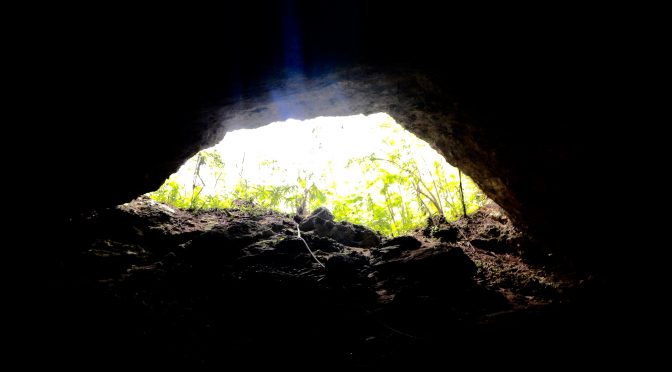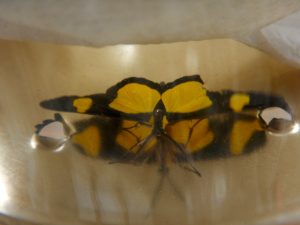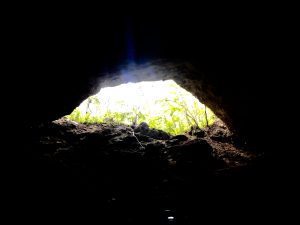To say that today has been eventful would be the understatement of understatements. It’s now 11pm as I write this, and I’ve been up since 4:50 am. Places we visited this morning seem like days ago, and I barely even remember what we ate for breakfast. (That’s a lie – we had a great breakfast of scrambled eggs and cheese and watermelon etc. and I do remember it.) But my tiredness and the humidity in the air are quickly emptying memories out from my head, so I’m going to jot them down and pass out until 4:30am!! yEET
The goal for today was to travel from the very edge of the Maya Forest to Las Cuevas Research Station in Chiquibul National Park. We left bright and early (like, 7am early. Who even am I?). Along the way, we stopped at some absolutely beautiful pools that were part of a river and aptly named Rio On Pools.
 Rio On Pools!
Rio On Pools!
The water was cool and refreshing, a welcome respite from the oppressive humidity. It would have been perfect if not for the 10495783 LEECHES THAT ATTACHED THEMSELVES TO MY BUTT AS I WAS BUTT-SCOOTING THROUGH THE RAPIDS. UM, EXCUSE ME??! They were small and painless though, so they were more gross than harmful.
After picking off the leeches, we dried off and headed along the exceedingly bumpy road to Caracol, a magnificent ancient Mayan city that was deserted by 1000 AD. Our tour guide, Leo, was extremely knowledgeable and seemed to have an answer to every question. We climbed over dilapidated gray remnants of homes and temples as we listened to Leo’s insight, although I was pretty distracted by the many butterflies flitting about. I think I spotted a red postman butterfly hovering near some white flowers and countless swallowtails dipsy-doodling in the fields of Caracol. #TFB.
We even managed to haul ourselves to the top of a temple, the tallest building in Belize, for an incredible view of the rainforests of both Belize and Guatemala. Unfortunately, a haze of smoke from Guatemala’s deforestation projects shrouded the area.

View from the top of the highest building in Belize.
As someone who lives in suburban Plano, TX and goes to school in a large city, seeing anything other than manicured lawns, squirrels, and rabbits counts as exciting.But today we hiked through some wild jungle, witnessed howler monkeys, scarlet macaws, tree frogs, parrots, and more. And at least 15 Blue Morphos, Belize’s most famous butterfly, flitted by the path in their characteristically erractic flight. I tried swiping at the them with my net but failed miserably. NEXT TIME I SHALL SUCCEED.
It didn’t end there – after dinner and the student lectures, I saw upwards of 20 species of moths hanging around the lamps at the station at around 9 pm. They were inexplicably drawn to the light sources and sat docilely on the walls as if hypnotized. Naturally, I ran around like a woman possessed snapping pictures and jotting descriptions. Here first is an imperial moth, but the second I couldn’t identify. They both had at least a 9 cm wingspan.


Good night, friends!




 Unidentified diurnal moth.
Unidentified diurnal moth. View from the inside of the cave.
View from the inside of the cave. Helmeted iguana
Helmeted iguana


 Swallowtail butterfly
Swallowtail butterfly Many-banded daggerwing
Many-banded daggerwing !!!!!!
!!!!!!
 Rio On Pools!
Rio On Pools!



















